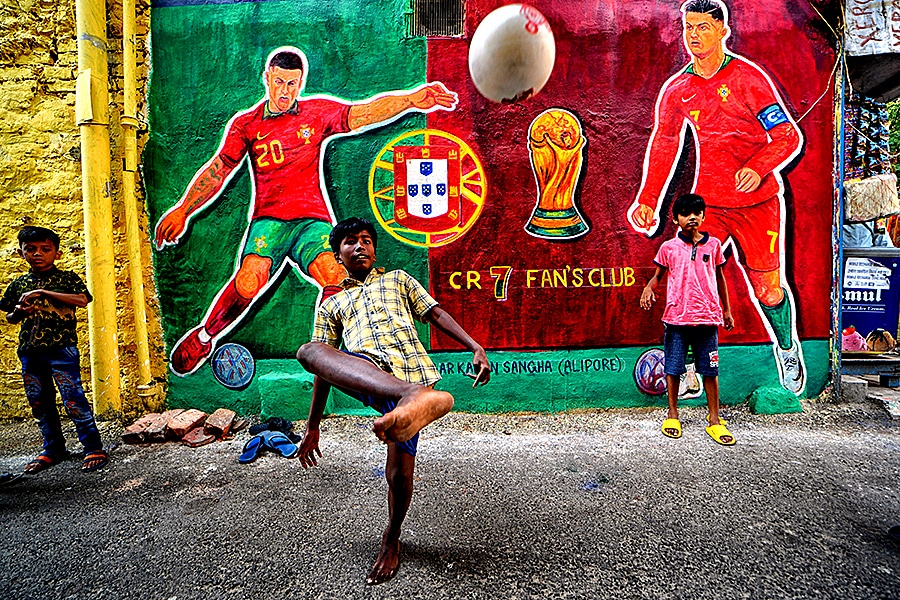
The Qatar Effect: How India can take the FIFA legacy forward
Three months after Argentina lifted the FIFA World Cup and ahead of the Indian Super League final, Forbes India takes a look at the impact on India of the Qatar extravaganza
 Children seen playing football in front of a graffiti wall with Cristiano Ronaldo (7) along the street as they celebrate FIFA World Cup 2022 in Kolkata.
Image: Avishek Das/SOPA Images/LightRocket via Getty Images
Children seen playing football in front of a graffiti wall with Cristiano Ronaldo (7) along the street as they celebrate FIFA World Cup 2022 in Kolkata.
Image: Avishek Das/SOPA Images/LightRocket via Getty Images
The legacy of any sporting event has two sides to it. The first legacy is the physical infrastructure created and the second is the effect of the event on those who have been part of it as well as how those in the vicinity will benefit from it. For India, the Qatar FIFA World Cup 2022 holds lessons and opportunities in both these legacy parts.
Indians who were a part of the World Cup in Qatar have gained valuable experience in different aspects of organising the World Cup including working on legacy projects, and these experiences will come in handy to them in their professional careers. It might also motivate some of them to pursue a full-time career in sports, especially in football.
“It shouldn’t be forgotten that Qatar’s staging of the World Cup has a firm Indian basis to it. From migrant construction workers through to middle and senior managers of the tournament, its legacy will always carry some Indian DNA. Post-event, the pressing issue surely becomes: What next for India and Indians?” says Simon Chadwick, professor of sport and geopolitical economy at the SKEMA Business School in Paris.
He says that given the significant numbers of Indian people who were involved in the World Cup, perhaps the Indian government should be addressing how this talent could be used to boost India’s own sports industry. “There’s an interesting opportunity, should the government and the sports industry seek to take advantage of it,” he says adding, “It immediately springs to mind that the Indian authorities may also want to think about how to address the talent drain that took so many Indians to Qatar in the first place, especially with Saudi Arabia now also spending big on sport.”
Also read: Football in India: What will it take to put the spotlight on players?







